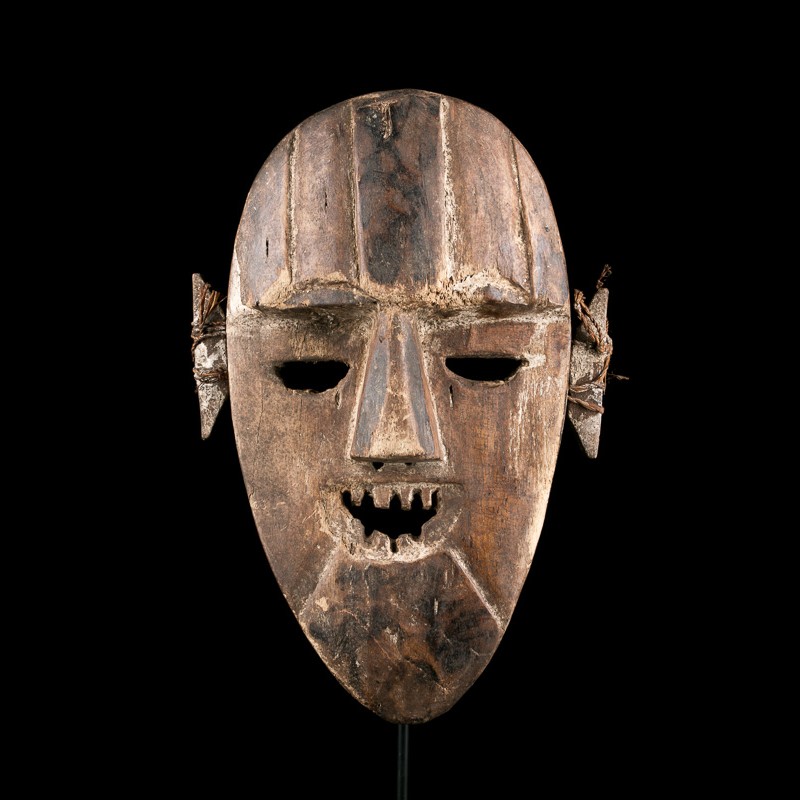


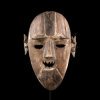
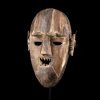



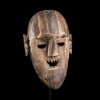
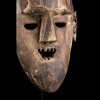



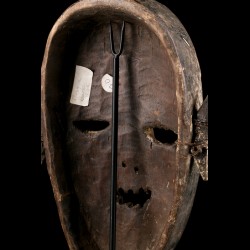




The Boa or Ababua masks are recognizable by their faceted forehead and the large protruding ears largely perforated often present. These masks are called pongdudu or kpongadomba. Their very particular aesthetic, in particular at the level of the ears, corresponds to a traditional aesthetic practice consisting in piercing the pavilions of women and men and placing a retractor there.
Some sources claimed that masks of this type were worn in war, which was presumably not the case. On the other hand, it is possible that they were worn during ceremonies preparing the warriors for combat. These masks were carved to order by a chief (kumu) and reserved for the bravest fighter, having rushed into battle first.
For masks made up of removable ears, the sculptor first made the mask and then hollowed out two grooves in which he fixed the ears.
Data sheet
You might also like

The Boa or Ababua masks are recognizable by their faceted forehead and the large protruding ears largely perforated often present. These masks are called pongdudu or kpongadomba. Their very particular aesthetic, in particular at the level of the ears, corresponds to a traditional aesthetic practice consisting in piercing the pavilions of women and men and placing a retractor there.
Some sources claimed that masks of this type were worn in war, which was presumably not the case. On the other hand, it is possible that they were worn during ceremonies preparing the warriors for combat. These masks were carved to order by a chief (kumu) and reserved for the bravest fighter, having rushed into battle first.
For masks made up of removable ears, the sculptor first made the mask and then hollowed out two grooves in which he fixed the ears.

